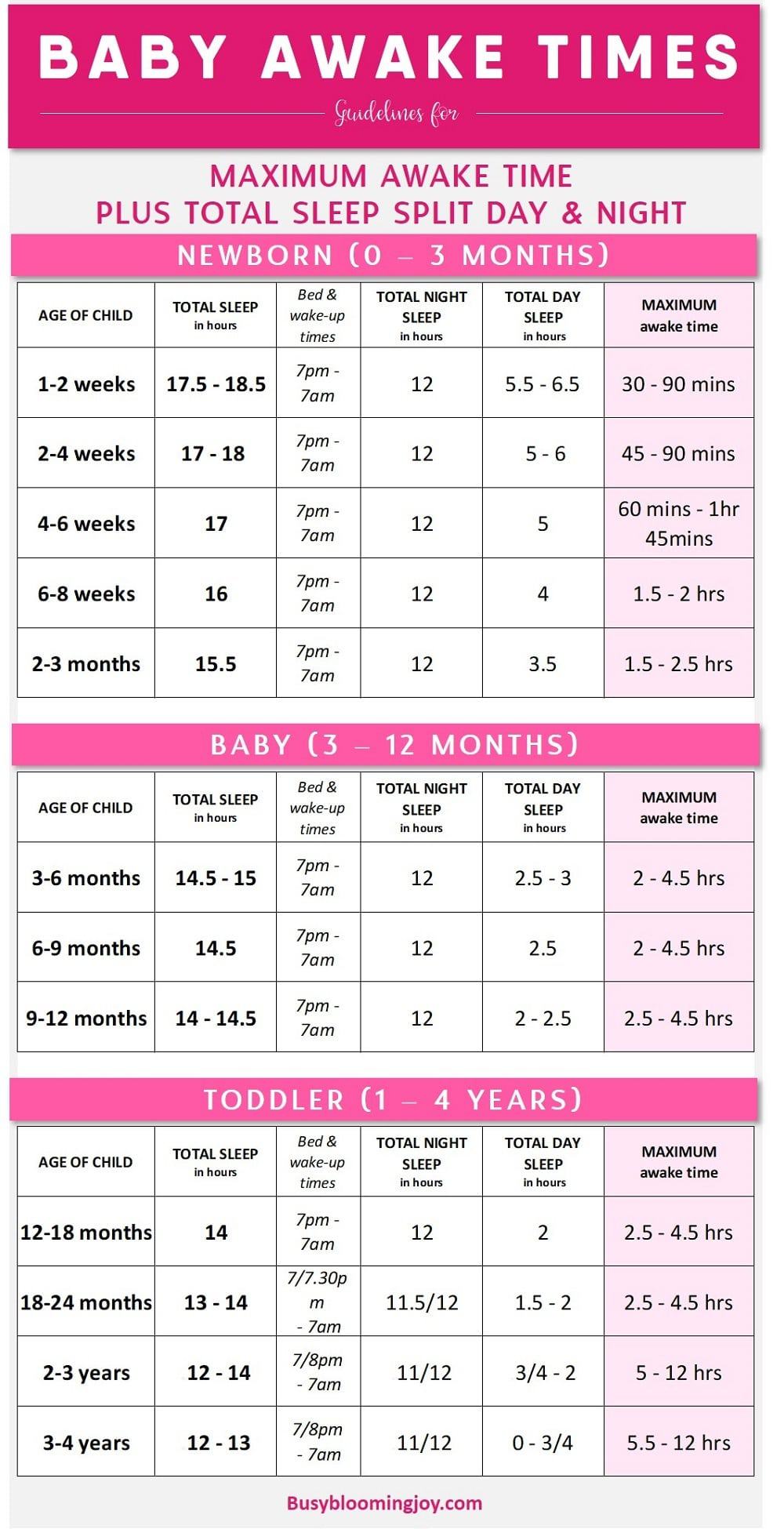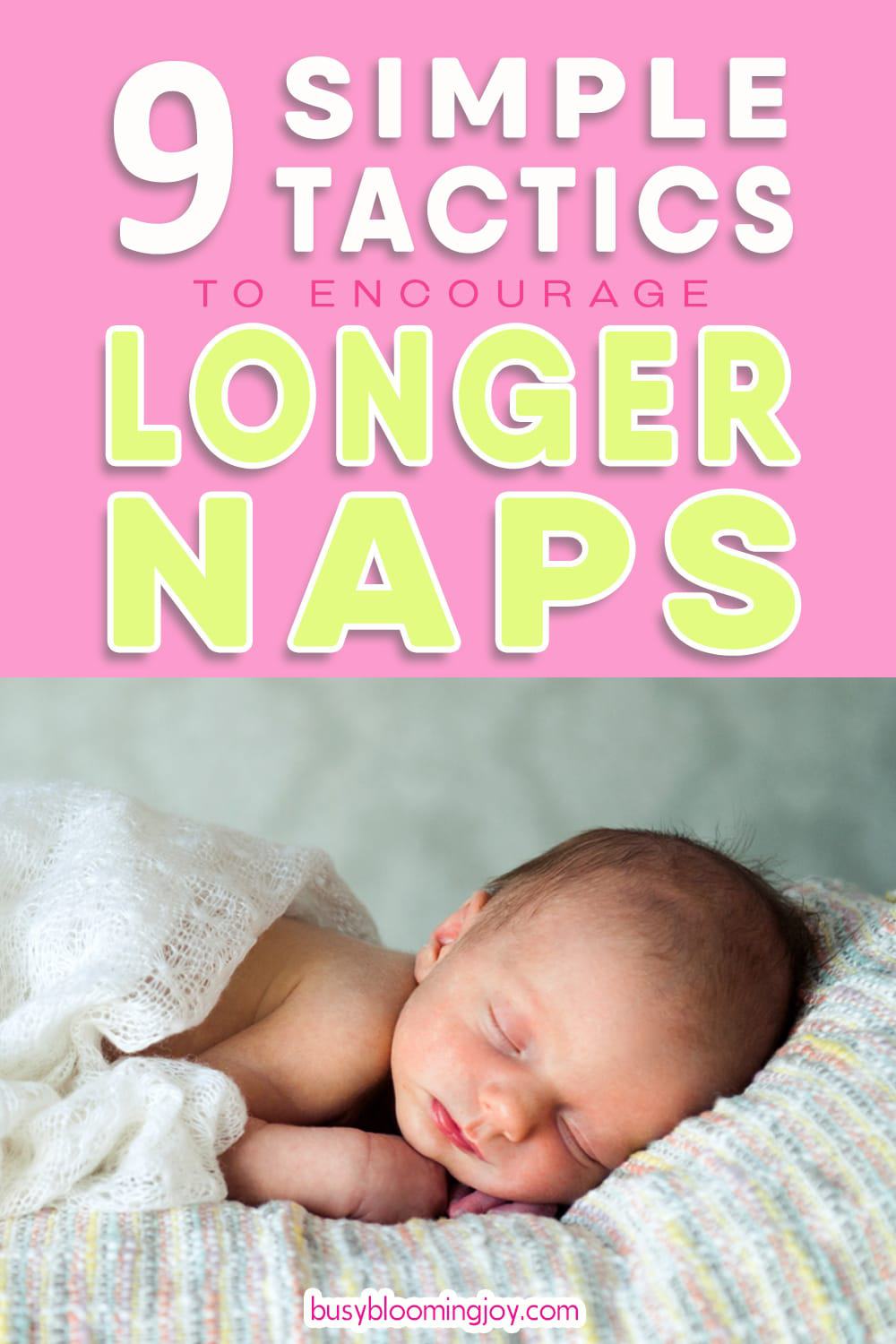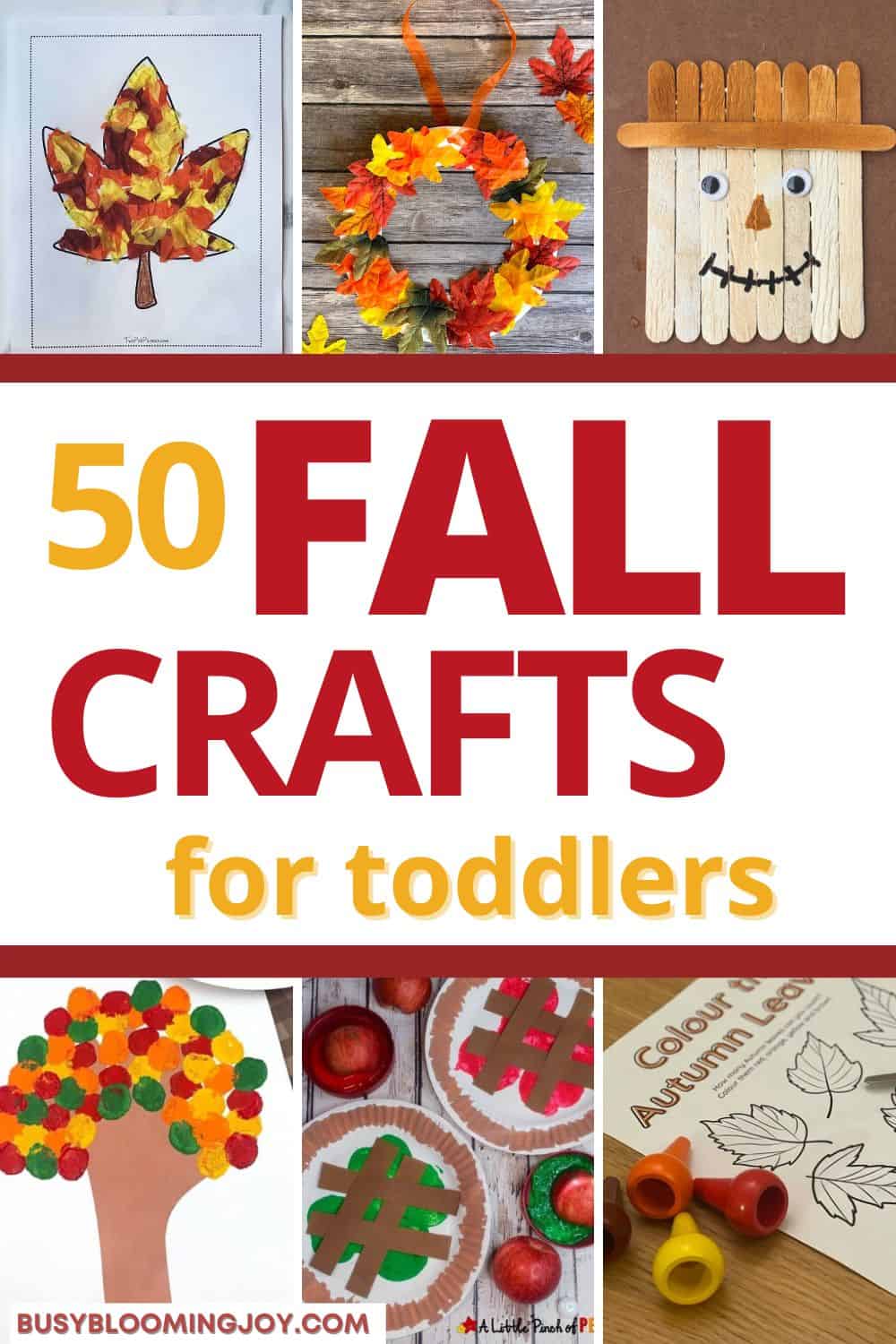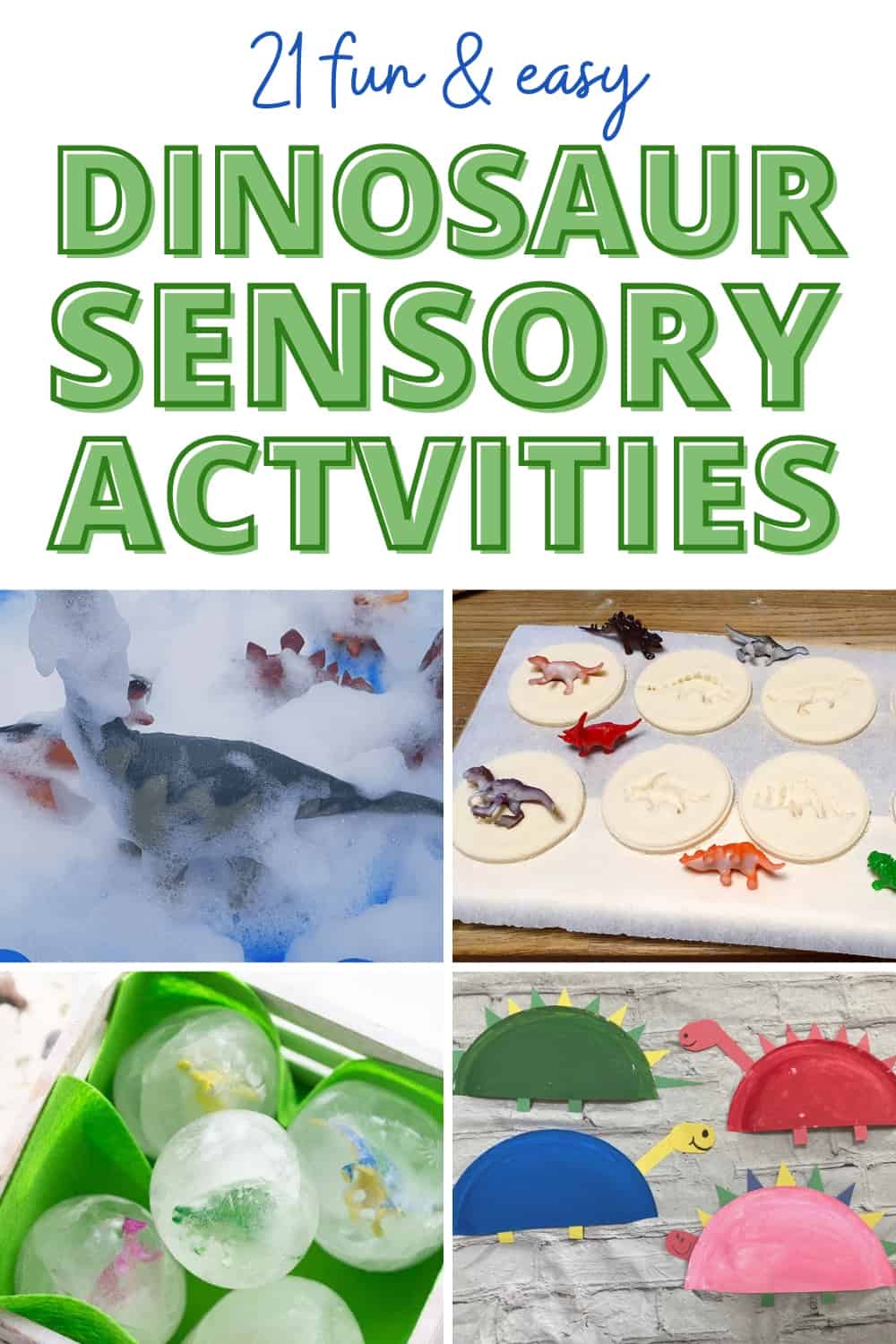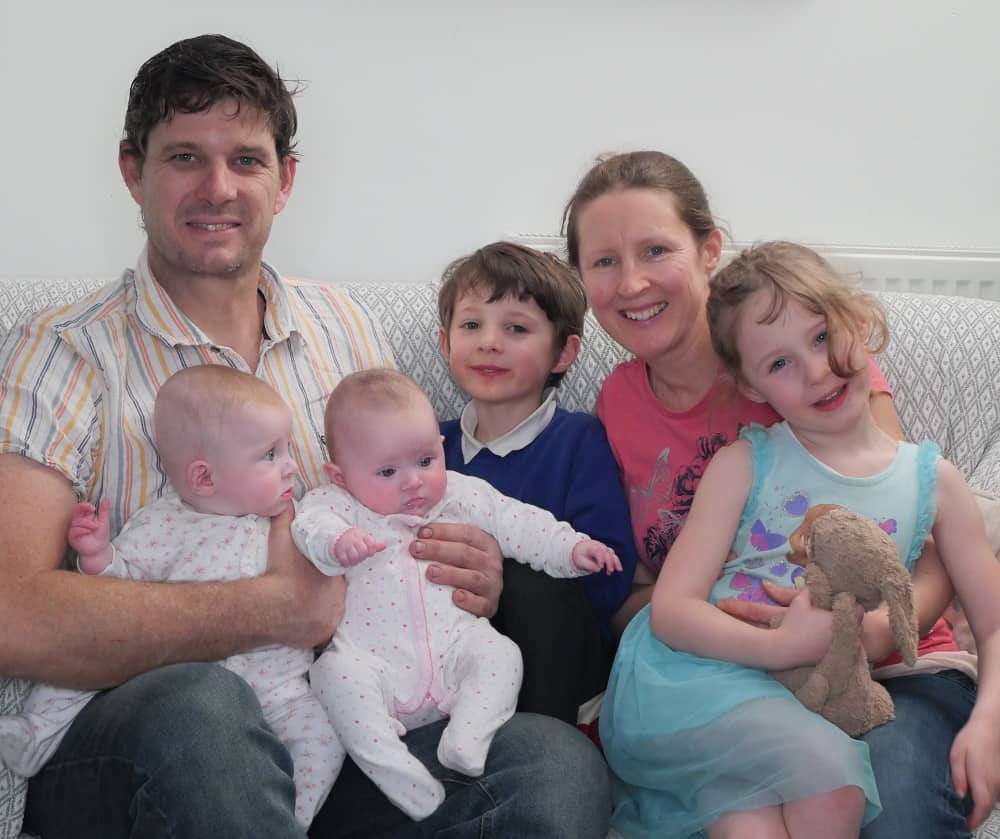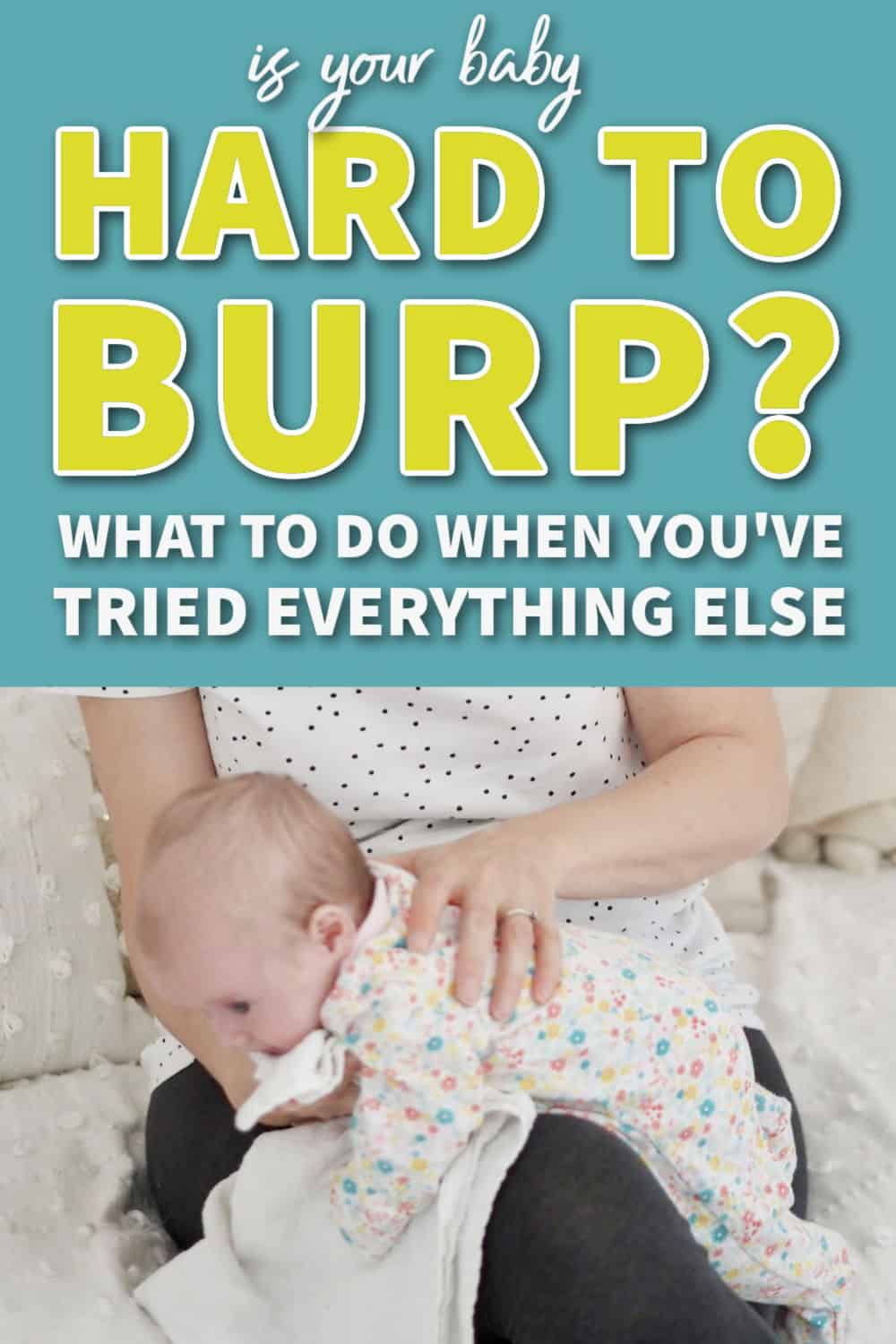Got a serial short snoozer on your hands?
If you’re going to get through this newborn phase with your sanity intact you need to make short naps a thing of the past.
You need to know how to get baby to nap longer.
Maybe you had visions of crocheting baby blankets, hosting coffee mornings with homemade muffins fresh out the oven and lovingly preparing a 3-course dinner for hubby…
Clearly, this type of supermom stardom is not possible if baby sleeps a maximum of 23.5 minutes at any one time.
Warning: if you’re aiming high in the supermom stakes, good luck with that. Let’s just say my expectations are a bit more realistic with two Littlees under my belt…
So let’s get real. You just want half an hour to yourself. Maybe just 10 minutes? And it’s just not happening.
Plus you have a sneaking suspicion that longer naps will be good for baby too.
And you would be right…
My promise to you: by the end of this post you will understand why long naps are worth fighting for and come away with a plan to go from serial short snoozer to 2+ hour ninja napper.
Table of Contents
ToggleIs this your reality? And why you need to banish the guilt of wanting a 2+ hour ninja napper!
Your newborn drifts off into lulla land, you run around the house like a headless chicken…
Dishes done. Check.
Laundry on. Check.
Kettle on. Check.
Drink cup of highly unexciting decaf alternative to your favorite beverage… Not checked.
On the dot; 23.5 minutes, 42.2 minutes. Maybe you’re lucky with 47.8 minutes?
Sometimes baby wakes cranky and seems tired. Surely, baby needs a longer nap?
Sometimes eyes pop open; baby is wide awake and raring to go. But you’re not.
You feel guilty, this time to yourself that you’re craving. Is 5 minutes to yourself too much to ask? Hell no!
2 hours to yourself is not too much to ask.
A wise lady said to me once: “Baby must fit into your routine too, you know”. (Thanks mom.)
It’s sooo important that you get some proper downtime in the day.
For physical rest, for a mental recharge. Because you’re human and to do your best to look after another human you need to take care of yourself too.
If you’re wondering how to get baby to nap longer you know this too.
Just stop with the guilt, alright?!
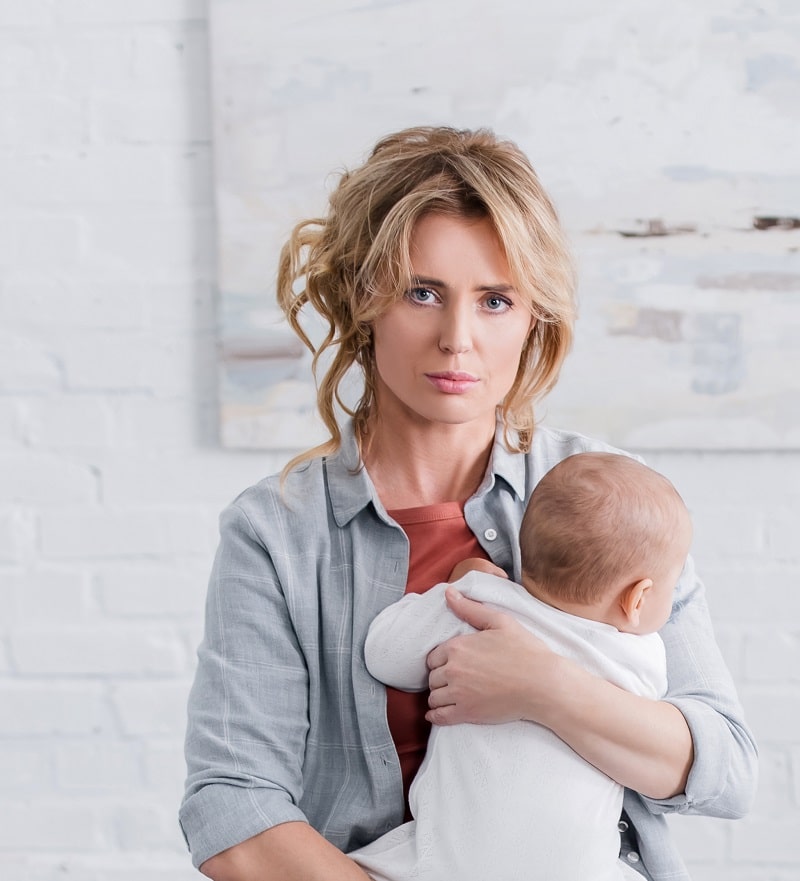
Why babies NEED long naps AKA not all naps are equal
First, a brief look at how newborns sleep which should put nap length into context…
Baby sleep patterns and cycles
Newborn sleep patterns consist of 45-minute long sleep cycles.
The cycle starts with restless ‘active sleep’ (equivalent to REM in adults), followed by ‘transitional sleep’ and finally the deepest stage, ‘quiet sleep’, ends the cycle.
Babies spend very little time in the ‘quiet’ sleep stage. 70-80% of the sleep cycle is in ‘active’ or ‘transitional’ sleep when they’re easily disturbed sleep and restless.
Teeny, tiny babies might have shorter, less defined ‘cycles’ and their sleep patterns might be even more topsy-turvey, aka you might believe the word pattern and newborn should not be in the same sentence.
But normally, even at a few weeks old, babies cycle between active, transitional and quiet sleep and 1 cycle is about 45 minutes long.
This will hopefully have given you a few ahah moments right there.
Different nap lengths and what’s going on…
1 – A ‘catnap’ less than 10 minutes
THIS DOESN’T REALLY COUNT AS A NAP AT ALL
Baby dozes off for a few minutes while latched on. You might not have even noticed. You nudge baby awake to take a decent feed.
Because that’s the other thing you don’t want; a serial snacker! Check out this post for how to spot one and what to do: Is Feeding On Demand Crushing You? How To Establish A Newborn Feeding Schedule WITHOUT Leaving Baby Hungry
A few minutes shuteye may be enough to revive baby for a good while longer; just like a 20-minute power nap can refresh you and give you a much-needed boost. Hint: when you get the longer naps sorted, that’s your cue to take a nap…
How long, of course, depends on the age of your baby and their typical awake time (the time baby can stay awake comfortably without getting overtired).
2 – A nap less than 30 minutes
BABY HAS NOT REACHED ‘QUIET SLEEP’
A super short nap may be a reflection of a newborn’s immature sleep pattern.
But it normally means your newborn has not progressed to the deepest, ‘quiet sleep’, stage.
Not ideal.
‘Quiet sleep’ is an important part of the sleep cycle that you want baby to reach. Without it, baby will not be getting sufficient rest.
2 – A 45-minute nap
BABY HAS COMPLETED 1 SLEEP CYCLE
Good stuff.
By completing 1 sleep cycle baby is getting a decent chunk of restorative sleep.
Hold on, I know we want to baby sleep longer than that, but this is good start.
3 – A nap of 1.5 hours or longer
BABY HAS COMPLETED MULTIPLE SLEEP CYCLES
THIS is golden.
Baby has strung two or more sleep cycles together.
Baby gets chance for a proper recoup; promoting healthy immune function, consolidating new learning and lowering stress hormones like cortisol, to name a few.
You get to crochet and bake (or, if you’re like me, just eat and sleep).
Either way, proper rest, for both of you.
Want a happy and contented baby?
Want to smirk smugly while your friends battle with the witching hour?
I kid, don’t do that.
But let’s just say that a decent 1.5 to 2-hour nap will completely change your world.
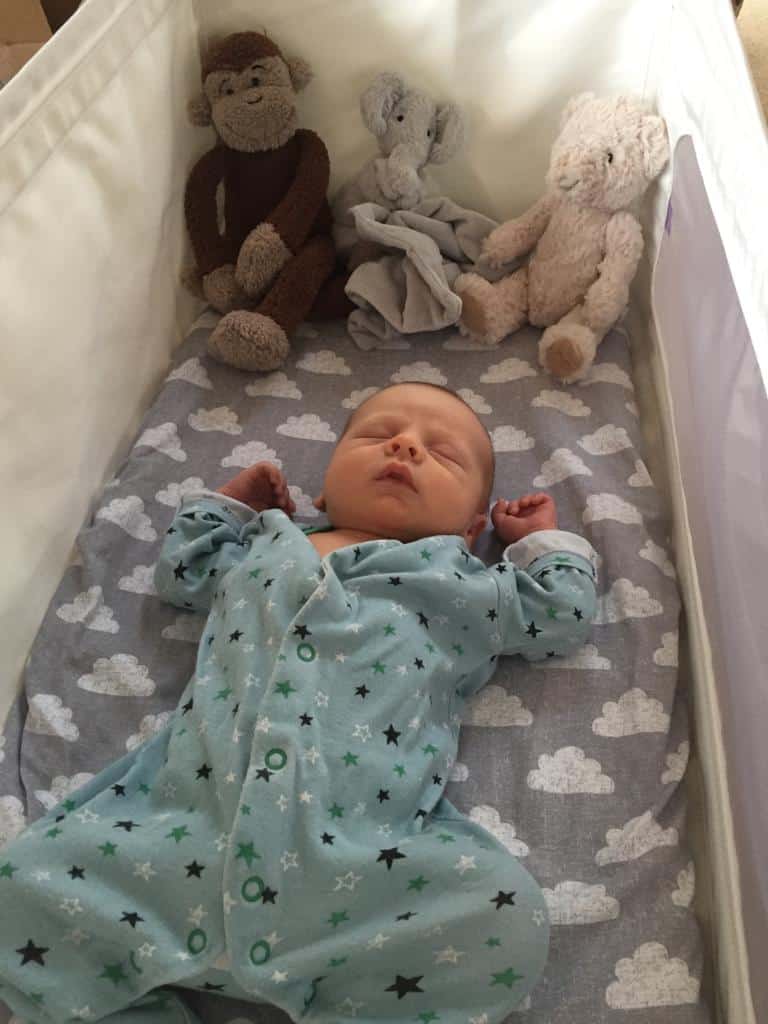
The ideal nap length
As a rule of thumb, the longer the nap the better. But you need to be sure of two things:
- Baby is not sleeping through feed times
- Baby has some decent awake periods in the day
If (1) baby is more likely to wake at night hungry – she didn’t get her fill in the day.
If (2) baby wants to party at night – she’s simply not tired enough.
So you might be getting some wonderful long day naps but unless you turn nocturnal you’ll be no better off.
A quick look at this a little bit by age.
Brand new teeny, tiny newborn
A newborn needs to feed every 3 hours (Golden Rule No. 2 to breastfeeding success – but this also applies if you formula feed).
So you’re aiming for a nap that’s a maximum of 2 to 2.5 hours.
You need time to feed and you want to encourage some active time afterward.
Older baby
As your newborn needs less sleep the amount of day sleep needs to reduce, so night sleep is unaffected.
You’re still aiming for at least 1 long nap of 2 to 2.5 hours.
Let’s say baby needs around 4 hours of sleep in the day.
Check this baby sleep needs post for guidance on day and night sleep needs by age.
Rather have this as one long 2-2.5 hour nap and two shorter 45-minute naps, than multiple 45-minute naps.
Ideally, you want this longest nap in the middle of the day, so baby gets a decent rest halfway through.
With some sneaky maneuvering, you can achieve this quite easily. Baby will be none the wiser. You’ll be a changed mom.
We will get to this in a bit.
SHORT NAP CAUSES & SOLUTIONS TO GET BABY TO NAP LONGER
The reason for baby’s short naps falls into one of 3 categories:
- something disturbs baby (internally or externally)
- baby is unable to go back to sleep after disturbance
- baby is not tired enough; baby wakes refreshed and doesn’t need more sleep
Some of these causes of short naps are easy to fix, some need a bit more work and then there’s the one with the sneaky maneuvering.
SHORT NAP CAUSE #1: An external disturbance
If you’ve been trying tactics to help baby to sleep longer and eventually, through the night, you will probably have been working hard to create the ideal sleep environment.
This is even more important in the day.
Remember that brief overview of newborn sleep earlier on? Newborns spend the majority of their sleep (70-80%) in ‘active’ or ‘transitional’ sleep when they’re easily disturbed and restless.
A disturbance can also prevent your newborn from transitioning between sleep cycles. It’s normal for babies to come into full but brief consciousness at this point – the brain’s way of checking in that all is ok.
The same things that will disturb baby at night will also wake baby up in the day:
- light
- sudden noise
- feeling too hot or too cold
- discomfort such as dirty nappy, uncomfortable onesie
- The startle or ‘Moro’ reflex
And light and noise can be a lot harder to control in the day.
LONGER NAP SOLUTION: Create the perfect sleep environment – darkness is a must
Just like at night you want to mimic the comfort of the mother’s womb as closely as possible. So using that list above aim for the following:
- complete darkness i.e. pitch black
- white noise/music or another consistent background noise
- room is a comfortable temperature
- baby goes to sleep with a clean nappy and is in comfortable clothes (hint: ditch the cute but totally impractical two-parters)
- a good swaddle to prevent the Moro reflex from waking baby
Yes, even in the day, you want a newborn to sleep in complete darkness.
If day-night confusion is a problem you need to focus on awake times being bright and active.
If you have a short nap problem it’s highly unlikely that day-night confusion is an issue, but still I feel the point needs to be made:
If you want to get baby to nap longer, baby’s sleep space needs to be pitch black.
Blackout window films and portable blackout blinds are your friends. More so than curtains lined with blackout material – curtains rarely have a perfect seal and nearly always let shafts of light into the room.
If you can’t see your hand when you hold it up in front of your face, that’s the kind of darkness we’re talking.
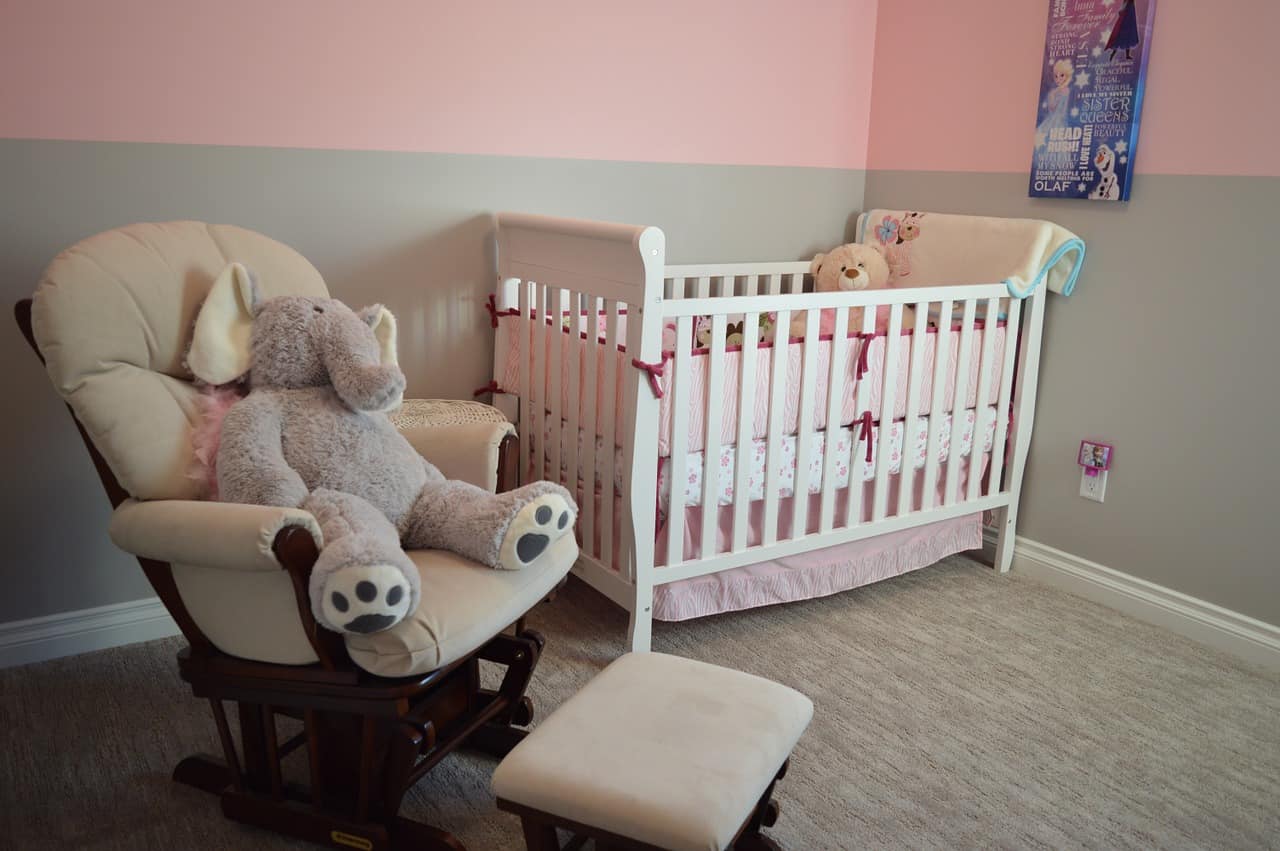
SHORT NAP CAUSE #2: Trapped wind/gassiness
If baby did not burp well or enough (and I’m talking 10-20 burps to get rid of the trapped wind typical after a decent feed), then trapped wind could well be an issue.
If baby wakes crying out in discomfort, wriggles and writhes, that lower gas pain is probably an issue.
If baby fell asleep while nursing or you were comfort feeding because baby was fussing, then trapped wind could well be an issue.
If baby burps as soon as you pick her up, trapped wind definitely was an issue.
Hint: if comfort feeding makes your fussy baby more uncomfortable, the extra milk is likely adding to the issue…
For more on why you want to avoid the comfort feed and how to do it, check out Golden Rule No. 5 for successful breastfeeding.
LONGER NAP SOLUTION: Ensure baby is well burped before a nap & get to the bottom of long-term gassiness issues
It’s always better to get the trapped wind out of baby before nighttime sleep or a nap. If you don’t and baby is prone to gassiness then a short nap is pretty much a given.
So to get baby to sleep longer get burping!
If your baby is regularly gassy then this is something to tackle. Alleviating gassiness will be a complete game-changer for a happy baby as well as longer naps and better sleep at night.
Check out this post to ensure you’re doing everything possible to minimize your baby’s gassiness: Got a gassy baby? 16 Common causes & remedies to fix them for good
There’s a whole section on burping in there too.
SHORT NAP CAUSE #3: You rush in too quickly when baby stirs
Again, one that’s all too easy due to the easily disturbed nature of newborn sleep.
During ‘transitional’ and ‘active’ sleep (the majority of the newborn sleep cycle) babies may cry out, call out, stir, wriggle, open eyes and look like they’re going to wake up when they’re not.
Plus they also often wake briefly between sleep cycles (after 45-50 minutes) but it does not mean that baby is necessarily ready to get up.
You need to give baby the chance to settle back to sleep.
LONGER NAP SOLUTION: Pause
Quite simply, you need to pause before rushing in to baby.
Baby may not be awake.
Baby may settle back to sleep if you wait a few minutes.
Pausing gives baby the chance to settle back to sleep alone: this is the first step in baby learning to ‘self-soothe’ and is key to longer sleep periods both day and night.
For more on the importance of the ‘pause’ in developing healthy sleep habits, plus how to do it check, out this post: Want baby to sleep through the night? Essential learnings from newborn sleep and the ONLY tip you really need
SHORT NAP CAUSE #4: Hunger
Hopefully, you’re trying the much talked about sleep, eat, play routine.
This encourages baby to fall asleep independently because you’re not feeding baby right before naptime. A cozy, snuggly feed close to nap time means falling asleep is way too easy and can lead to a feeding-to-sleep association…
The only problem with sticking to sleep, eat, play is that it can be difficult to fit in a really long nap of 2.5 hours.
Remember, we’re thinking big here and going for gold with a 2.5 hour nap after lunch!
Say you feed your 8-week old baby at 10.30 am, baby is done by 11 am, awake another 30-60 minutes or so and then sleepy and ready to take a nap at midday. If baby feeds every 3 hours a feed will be due at 1.30 pm…
Signs that your hunger is the reason baby is waking after a short nap
Pretty straightforward:
- baby is desperate to feed on waking
- baby wakes crying the ‘hungry cry’, which is the ‘owh’ sound (if this sounds like a foreign language to you, don’t stress – check out Newborn Hack no. 16 right here.)
LONGER NAP SOLUTION: The top-up feed & split feed
A ‘top-up’ feed is when you offer more milk before the nap, the aim being to delay the next feed and allow a longer sleep.
But just like you can lead a horse to water but not make him drink, the same goes for your baby. Baby may still be full from the previous feed.
However, if baby is waking due to hunger and it’s been 1.5 to 2 hours since the last feed, chances are she’ll go for a top-up feed.
This could be the answer to getting baby to take a longer nap.

If baby refuses a top-up feed, try a split feed
A split feed is when you feed half/the majority of a feed, for example 1 breast or half/majority of the bottle, take a break for a certain period, and then nurse from the second breast or remainder of the bottle.
This encourages baby to drink more milk in total; the break allows baby to build a little more appetite and drink more at the second sitting. With a full tummy, this delays the timing of the next feed, allowing baby to sleep longer.
WATCH OUTS for top-up feeds and split feeds
This goes back to the reason why you were sticking to the sleep/eat/play routine in the first place… You don’t want to feed baby to sleep and develop a feeding to sleep association.
So finish feeding early enough that baby falls asleep without boob or bottle in the mouth.
In this newborn sleep and feeding schedule, there’s a ‘top-up’ feed before the long lunchtime nap and the last feed of the day (ie. between 7 am and 7 pm) is a ‘split’ feed.
SHORT NAP CAUSE #5: Baby is overtired
Overtired babies do not sleep well.
Do not be fooled into thinking that if you want your baby to nap longer that keeping them awake longer is going to help.
In fact, the opposite is normally true.
Baby does need to be tired enough to sleep, but not overtired.
Not only is an overtired baby difficult, neigh-on impossible, to settle, overtiredness nearly always means short naps, waking early, waking cranky and altogether a not-so-happy-chappy.
Seems completely counter-intuitive right?
Nature’s way of keeping baby going when overtired is to release the stress hormone cortisol, which is involved in the flight-or-flight response. So it can turn your happy, sleepy, ready to sleep baby into a stressed, agitated frenzy.
Super-duper meltdown alert.
Then, once asleep the cortisol continues to circulate. It’ll be a likely disturbance when baby is in those light sleep stages, meaning baby will wake sooner and/or more often.
Short snoozer alert.
Signs that baby is overtired
Other than super-short naps and difficulty in settling, if baby is agitated and generally fussy at other points in the day and you can’t see an obvious reason then overtiredness could be an issue.
If baby is wriggling and writhing and generally uncomfortable, gas pains might be the issue. Check out this gassy baby post for the causes and solutions.
You can also check the amount your baby is sleeping and the length of time baby is awake against the chart below.
If baby is sleeping 2+ hours less than in the chart, it’s highly likely your baby is not getting enough sleep.
If baby is awake longer than 2 or 3 hours than recommended in the column ‘maximum awake time’, it’s highly likely your baby is overtired.
LONGER NAP SOLUTION: Avoid baby becoming overtired
Learn your baby’s awake times & tiredness cues
You need to figure out baby’s awake times, carry out a wind-down routine and settle baby into bed before overtiredness enters the equation.
Figuring out awake times means learning baby’s tiredness cues, including baby’s own unique sound for ‘I’m tired, Mom’ (and yes, I’m being serious!).
You can start by referring to the ‘awake times’ in the chart above but to learn all about the universal language of babies so you can spot the tiredness cues specific to your baby, check out this overtired baby post.
Climbing out of the sleep debt due to consistent overtiredness
Clearly one of the keys to baby not become overtired is to ensure baby sleeps well.. Ha! But baby won’t sleep well because of the cortisol overload… so if baby is often overtired it can be a difficult cycle to break!
In this case, you’re going to have to do whatever you can to get baby to sleep. Then when baby wakes, help baby get back to sleep. (Checking that there are no other reasons baby has woken.)
It’s going to be hard work to get baby out of that sleep debt, but necessary.
The more sleep baby gets, the better baby should sleep. So the saying you really need to remember is:
Sleep begets sleep.
Then keep an eye on those awake times and tiredness to avoid the cycle all over again.
SHORT NAP CAUSE #6: Baby unable to settle back to sleep on waking
So brief wake-ups between sleep cycles are normal (apologies if I’m beginning to sound like a broken record).
A newborn baby might not have got the hang of linking sleep cycles.
LONGER NAP SOLUTION Help baby back to sleep until long nap becomes a habit
First, check that nothing is disturbing baby that needs your attention.
Dirty nappy? Hunger? Too hot? Too cold? Trapped wind?
Fix those first.
Minimize stimulation while you’re doing your checks, to tell baby that it’s still time to sleep:
- keep lights low
- no sudden noises
- avoid eye contact
This is exactly the same as if baby wakes to feed at night; you want to keep the message clear to your baby: this is sleepy time, not playtime, time to go to sleep.
If you can get baby to go back to sleep these longer naps should become habit. If you can stop helping baby before the 3-4 month mark you should avoid any negative sleep associations.
SHORT NAP CAUSE #7: The 4-month sleep regression
The only thing I noticed about my first-born’s 4-month sleep regression was that his solid 2.5 hour early afternoon nap, established since a few weeks old, completely disintegrated.
By then he was already sleeping through the night using this 10-step strategy, so I knew it wasn’t a self-settling ability.
If your baby is suddenly cutting naps shorts and is around 3-4 months, this sleep regression could be the reason.
LONGER NAP SOLUTION: Ignore until sleep regression passes or help baby back to sleep
If your baby is self-settling in the night and falling asleep independently, you can be pretty sure you’re not going to risk a negative sleep association/sleep prop developing if you help baby back to sleep.
Try as I might, I rarely managed to get my 4-month-old baby back to the sleep.
It was a long 6 weeks of 45-minute lunchtime naps and then, just like that, the 2+ hour naps came back.
I’d like to add that they’ve stayed that way ever since – even aged 3.5 he needs waking up from his lunchtime nap. So don’t panic too much, hang on in there!
And remember, if baby wakes early, a short nap later in the day will probably be necessary. So keep an eye on how long your baby has been awake.
SHORT NAP CAUSE #8: Baby is reliant on a sleep prop
If baby is reliant on rocking, shushing, patting, nursing or pretty much anything that involves your input, that’s said to be a negative sleep association and baby is reliant on a ‘sleep prop’.

These normally only develop after the 3-4 month mark, when sleep consolidates (the infamous 4-month sleep regression as mentioned above).
Sadly, these are all too common, can develop pretty speedily and even when you’ve managed to avoid them previously.
Yes, I speak from experience
My second-born was self-settling and sleeping through the night by 3 months, just like my firstborn. But a bad start to weaning combined with gas and reflux issues meant she developed the most common sleep association of nursing to sleep. Sigh.
If your baby is reliant on a sleep prop, your baby probably needs your help when waking at night and in getting to sleep in the first place…
So this is not just a short nap issue, you need to teach your baby to sleep for longer periods and go to sleep independently.
SOLUTION: Remove sleep prop
Sounds so simple, right?
The concept is simple: replace sleep props with positive sleep associations. So:
- a solid bedtime routine
- a solid naptime routine
- sleep-inducing environment
In practice, it’s rough.
You can remove sleep props gradually or you can do it cold turkey. Either way, unfortunately, a few tears are a given.
Nobody likes to hear their baby cry; it goes against our very instinct to protect and nurture. But teaching your baby to self-settle is probably the greatest skill you can teach them right now.
Think of your long term vision of baby entering toddlerhood sleeping well at night, napping well in the day and of all the wonderful family memories you’re making together… this is all made possible when sleep is a given!
Anyway, that’s a story for another day.
SHORT NAP CAUSE #9: Baby is not tired enough
If baby is eyes open, wide awake and looking to get going again, it’s likely baby is simply not tired. To use a more technical term, there’s not enough ‘sleep drive’.
This can happen if baby recently had a long nap or even recently had a super-short 10-minute power nap.
You’d be surprised how much a 5-minute zizz can revive your newborn.
If you’ve figured out your baby’s awake times you should be settling baby towards the end of this period, so that baby is tired enough to sleep but not overtired.
You haven’t? Check out the section on working out baby’s awake times in this overtired baby post – that link should take you straight there.
If you’re not getting longer naps, this is where you use the power of the super-short nap to your advantage and try some sneaky maneuvering.
This is where you help your baby fit in with your schedule.
Ooohhh exciting… Get ready!!

LONGER NAP SOLUTION: Cut the previous nap shorter
The easiest way to explain this is with an example.
Let’s imagine you have a toddler just over a year old who takes two, sometimes three 45-minute naps. One mid-morning, one in the afternoon, then sometimes another nap later on.
A 3rd nap means your toddler wakes too close to bedtime and is then wide awake at 9 pm…
You want to get back to that 2-hour long afternoon nap that was so solid a few months ago; that would give your toddler the rest needed to make it through the afternoon without getting overtired.
So you go through the full checklist of short nap causes above and try every tactic to no avial.
You need to cut the first nap down
Cut it down to 30 minutes and see if that encourages a longer 2nd nap.
If not, keep cutting it until the longer afternoon nap has re-established.
Maybe a super-short 10-minute catnap will see baby through to lunchtime. It’s a case of try it and see.
What about at other ages?
You can use these principles at any age – by cutting a nap shorter than 1 sleep cycle (so to half an hour or less) baby won’t reach the deepest sleep stage.
Baby will be refreshed to stay awake a little longer but when due a sleep, baby should be more tired.
1 word of warning on longer naps
When baby starts to take longer naps (it’ll happen, pinky promise!) you may find night sleep is disrupted a bit.
Don’t panic – this is normal.
Baby is getting more rest in the day; not necessarily more sleep, but better quality, more restful sleep.
So then is not as tired to sleep well at night.
This may resolve itself or you may need to tweak day naps (trim a little off) so that night sleep improves.
Again, a case of trying and seeing.
In summary
If you’re desperate for baby to take a longer nap, I hear you. You need the rest and recoup!
Not only that, it’ll do your baby the world of good to get a solid 2 hours snoozing in.
Hopefully, now you have a good few tactics to combat your baby’s short naps and make long naps the reality. It’ll be well worth the effort!
Let me know how you get on or if you have any questions, please let me know in the comments below.


